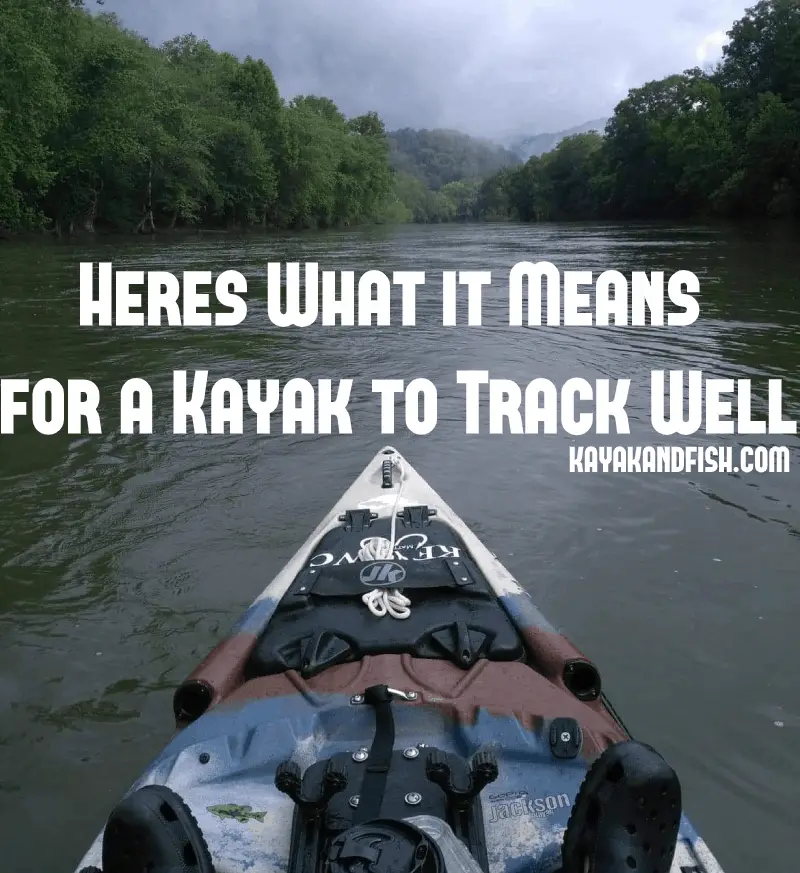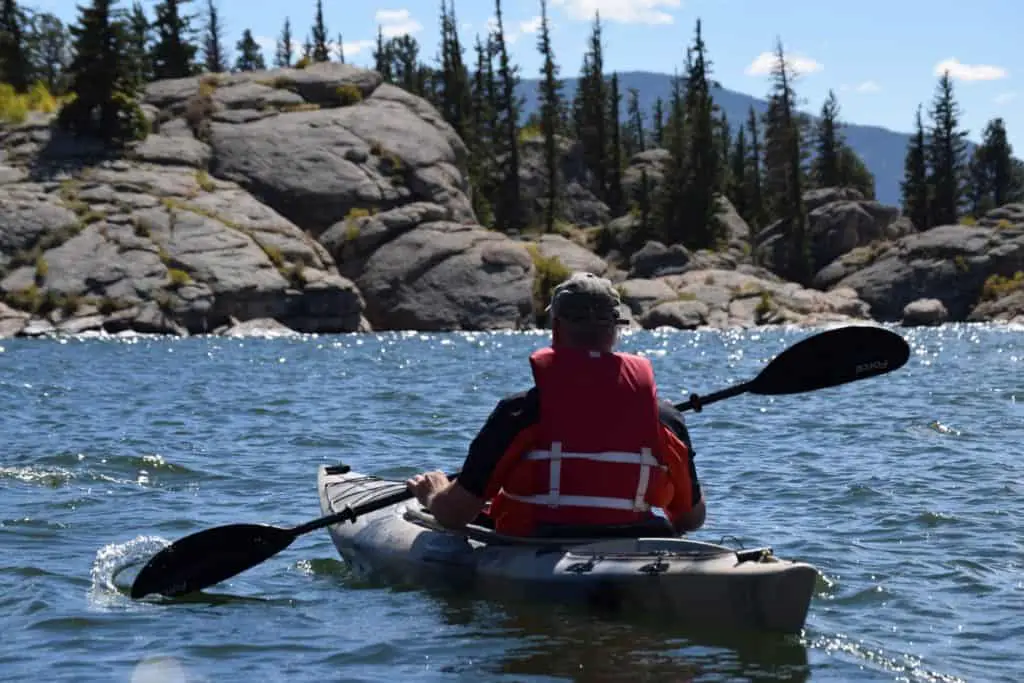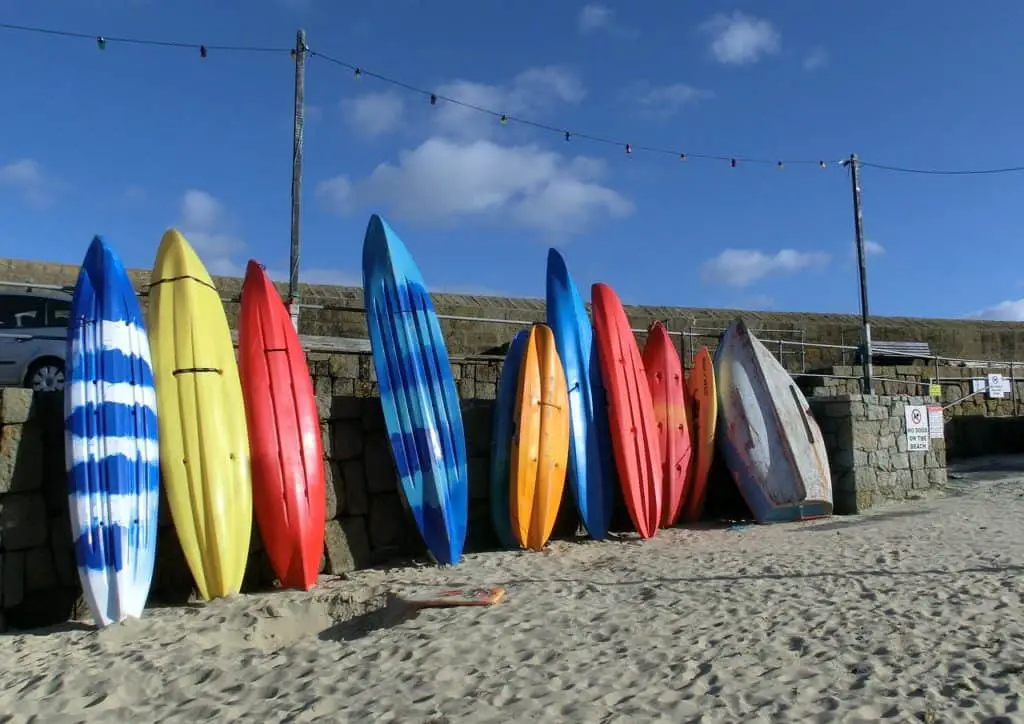
There is nothing quite like floating down a lazy river in a kayak, looking for the perfect spot to cast a line. Just you and nature as the sun comes up over the horizon. When you are new to kayaking, however, some of the terms can be a bit confusing. Even generally knowing what a term means can be confusing when different people use it in different contexts.
What does it mean for a kayak to track well? Tracking refers to how well a kayak moves in a straight direction or how well it stays “on track.” The design of the hull has a direct impact on a kayak’s ability to track well, but the kayaker’s technique is also at play. An experienced kayaker can make a kayak track well more easily than an inexperienced kayaker.
When a kayak tracks well, it means that it goes straight when you want it to, but there is a bit more to it than just going straight. If you think of the path ahead of you like a track, then being able to follow that path or track easily is “tracking well.” However, some kayaks that are built to track well are also harder to turn, which is why it is part design and part skill.
How Kayak Design Affects Tracking
Some kayaks are designed to track well while others are designed with maneuverability in mind. From the length of the hull to different addons like a rudder or skeg, the design can play a huge part in how well a kayak can track.
The Length of the Hull
Some kayaks are designed with a longer hull, which improves their tracking ability. For an inexperienced kayaker, a longer hull can make it much easier to track well.
The downside to a longer hull is in the lack of maneuverability. While a longer hull can track well, it can also become harder to turn the kayak when you want to. How important maneuverability is to you will depend on where you are kayaking. Most areas where you would use a kayak for fishing do not require a lot of maneuverability. Flatwater lakes don’t require a kayak that tracks well while a swift-moving river would.
If you are trying to take a long hulled kayak on a river that has a number of turns and curves, you may not be able to maneuver kayak like you would need to and this can be a major issue, depending on a number of circumstances including how fast the water is going and how deep it is where you are kayaking.
Sometimes it is not as straightforward as you may think when considering a longer hull. While yes, a longer hull will help with tracking well, there are a few things, like weathercocking (which is a term used to describe a kayak’s tendency to turn in the wind), that can affect how well a kayak tracks. These are things that need to be kept in mind when purchasing a fishing kayak, and I will cover them in length later in this article.

The Rudder
A rudder can also help with tracking or keeping on course. A rudder is a moveable fin on the back, or stern, of a kayak which aids in steering. While some smaller kayaks do not come with a rudder, longer kayaks either come with the standard, or you can add an aftermarket one. Some manufacturers also allow you to add one at the time of purchase when buying a new kayak.
While the definition of a rudder is “a device for steering or maneuverability.” Most experienced kayakers see them more as an aid rather than a device used specifically for steering, preferring to do most of the steering through paddling. This is because they do not solely rely on them to help them maneuver their kayaks but to assist in greater maneuvers.
In most kayaks, the rudder is controlled with foot pedals, but kayaks that are powered by pedaling will usually use a handle instead. These types of kayaks are great for fishing as they offer a way to move while still holding your pole in the water, it can be a bit confusing if you have not used a pedal kayak before but is easy to pick up and master with a bit of practice.
The rudder can help in keeping a kayak on track as long as you use it more for helping to keep it on track rather than using it all of the time to turn or to maneuver. This is when having a rudder can be more of a disadvantage as you would always be fussing with it rather than learning how to maneuver the kayak with other techniques.
When purchasing a rudder for your kayak, keep in mind that they can be pretty pricey. In my experience, they aren’t worth the price tag which normally sits in the mid 1-200’s. If you’re interested in a quick fix for tracking issues, I recommend a skeg.
A Skeg: What it is and What it Does
A skeg, similar to a rudder, is attached to the back, or stern of a kayak. It acts in a similar fashion to an anchor, but it does not anchor you to a spot, rather it anchors the stern of your kayak into the water. While most kayaks do not come with a skeg, you can easily purchase one from Amazon and just stick it to the bottom of your kayak.
This is the skeg that I recommend on Amazon. It’s simple and easy to mount but most importantly, it’s inexpensive and gets the job done. The fin itself actually slides out of the brace so you can easily remove it before entering or exiting the water.
One of the biggest differences between a skeg and a rudder is that a rudder is directional, meaning that it can be moved, a skeg does not actually move as it is more for weight and helping to keep you on track rather than to direct you. As a matter of fact, most skegs only have two positions, deployed and not deployed, or in use and not in use. The skeg that I recommend attaches to the bottom of your kayak and can be easily removed by sliding the fin out of the brace.
A skeg can help with keeping your kayak on track, though they take away some clearance that your kayak needs when navigating shallow waters. A durable skeg should be able to hold up to some abuse.
How Damage Affects Tracking
Cheap or old kayaks will have some damage, no doubt. Small scratches and scrapes aren’t big enough to affect the tracking of your kayak. However, large scrapes and dents will cause your kayak to track differently because it changes the way the water flows against the bottom of the kayak.
Be sure to inspect the hull of your kayak every now and again and make repairs accordingly. Making sure that your kayak is damage free when you purchase it is also very important.
If you inspect your kayak’s hull and find damage that you suspect is causing it to track in odd ways, check out this article where I cover the proper ways to maintain your kayak and repair it and keep it in good condition.

How Experience Affects Tracking
A kayaker that is more skilled or experienced can make use of a shorter hull and still make it track well. This is just something that comes with doing it more often, and like anything that requires some skill, there just is not a substitute that can change this.
If you are someone who has a couple of years of kayaking experience under your belt, you may have figured out exactly how to maneuver a kayak to get it to do what you want to do. It is more your skill that is allowing the kayak to track well as opposed to the design of a longer hull.
Don’t be discouraged though, learning proper paddle technique and how to maneuver a kayak is a fun and rewarding experience that doesn’t require a lot of effort. Check out this less than 5-minute YouTube video that provides a quick rundown of proper paddling technique!
A high-quality paddle is important. Cheap paddles tend to make paddling way more difficult than it needs to be. Check out my Recommended Gear Page for all the gear that I use.
What Throws You Off Track When Kayaking
There are two things that can affect tracking on a kayak: the wind and the current of the water. I’m going to break them down for you now.
The Wind or Weathercocking
Weathercocking is when the wind pushes you off course. If you think about how the wind affects a kayak, you will notice that typically the wind will push the front, or bow, of the kayak down into the water, basically anchoring it. The back, or the stern, however, will be pushed up more, allowing for the wind to push against it.
This results in the stern being pushed away from the wind or being pushed “downwind,” and it turns your kayak towards the wind and will blow you off course. A skeg can be used to help combat the wind.
This isn’t exclusive to kayaks, all watercraft experience this issue in some way.
The Current of the Water
The current of the water will basically do the opposite of what the wind does. Due to the fact that the wind is pushing the bow more into the water and lifting the stern, the water current can affect the bow more than the stern in a kayak. This can cause a kayak to go off track as well. Although with fishing, you may not experience this issue because you will want to avoid areas of greater current anyways.

